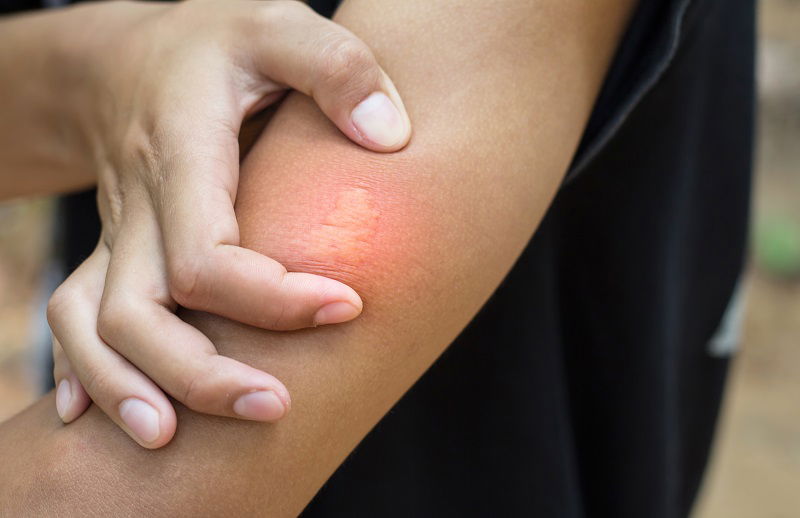A sting from an insect like a bee, wasp, or hornet is nobody’s idea of fun. However, it can range from a minor inconvenience with temporary pain to a serious threat to your health. Here is how to deal with an insect sting and how to know if you are having an allergic reaction.
Symptoms of an Insect Sting
There are three main types of reactions to insect stings. The severity of your reaction will depend on whether you are allergic to insect stings. The main symptoms and reactions include:
- A normal, non-allergic reaction: Pain, swelling, and redness at the sting site.
- A large local reaction: Swelling extends beyond the sting site.
- An allergic reaction: Allergic symptoms may include hives, itching, nausea, vomiting, swelling of the tongue and throat, difficulty breathing, a weak or rapid pulse, dizziness or fainting, or loss of consciousness.
An allergic reaction is the most serious and requires immediate medical attention. Severe allergic reactions to insect stings can result in anaphylaxis, which can be life threatening.
What to Do If You Are Stung by an Insect
If you have a normal, non-allergic reaction to an insect sting, you can treat it by following these steps:
- Remove the stinger if still present.
- Clean the area with soap and water.
- Apply a cold compress to reduce swelling.
If you have a large local reaction, follow the same three steps listed above. You can also:
- Take an over-the-counter pain reliever like ibuprofen to help relieve discomfort.
- Apply hydrocortisone cream or calamine lotion to ease itching, redness, or swelling.
- If the itching or swelling is bothersome, take an antihistamine that contains Benadryl or chlorpheniramine.
- If symptoms worsen or spread, seek medical attention immediately.
If you have a serious allergic reaction to an insect sting, you need immediate medical attention. The primary treatment for anaphylaxis due to an insect sting is epinephrine, which is a fast-acting hormone and medication that can reduce the symptoms of an allergic reaction. If you have a history of severe reactions to insect stings, you should carry an epinephrine auto-injector with you at all times. The auto-injector is a pre-filled, easy-to-use device that delivers a single dose of epinephrine.
If you have been prescribed an epinephrine auto-injector, use it as soon as you experience symptoms of anaphylaxis. If symptoms persist after using the auto-injector, seek medical attention immediately. In addition to epinephrine, your doctor may also prescribe antihistamines, corticosteroids, and other medications to manage the symptoms of an insect sting allergy. If you have a history of severe reactions to insect stings, it’s important to work with an allergist to develop a comprehensive treatment plan.
For more information about insect stings, what to do if you are stung, and how to know if you are allergic to insect stings, we welcome you to contact our allergy clinic today at West River ENT & Allergy. We look forward to taking care of you.




